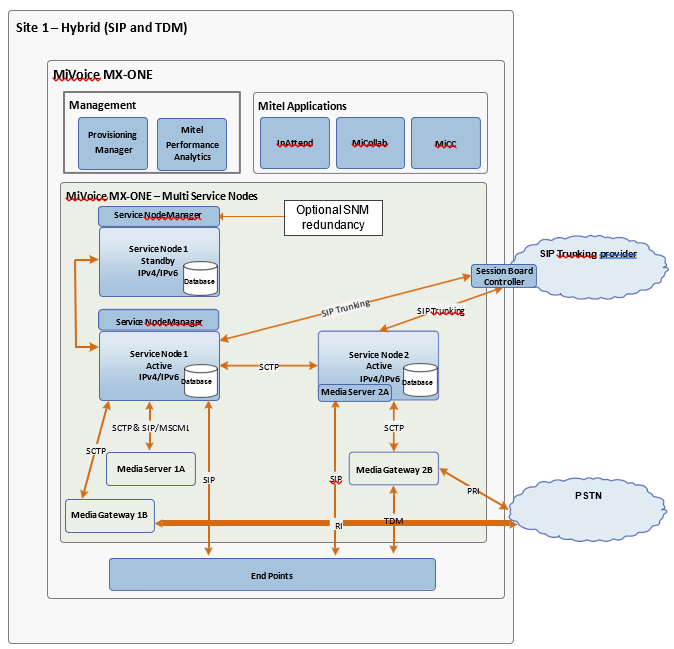Scenario 1 – 5,000 SIP Extensions

In this scenario, there is only one Data Center and the database nodes are deployed in the Service Node 1 active, in the Service Node 1 standby and Service Node 2. The database nodes need to be installed in both active and standby, because in case Service Node 1 is not available, the Service Node 1 standby can take over the full functionality.
For example, if in this scenario the MX-ONE system has 5,000 users distributed in the 2 Service Nodes, the data- base requirement for 5,000 users is 10 GB of RAM memory and 4 CPUs/vCPUs which in this case is equal to the requirements for 2.5 K SIP users per Service Node.
From MX-ONE 7.0 release onwards Service Node Manager redundancy is introduced, which might be used in this case to avoid that the Management System (Provisioning Manager and Service Node Manager) do not work when the system is running in the Service Node standby.
Customers which require moves, adds and changes when a MX-ONE Service Node is down must use server redundancy, MX-ONE 7.0 and later releases still requires that all MX-ONE Service Nodes are up and running to be able to make changes in the system, because of the reload data used in some functionalities. So, in the scenario described in figure 6, the Service Node 2 must also support 1 + 1 server redundancy.